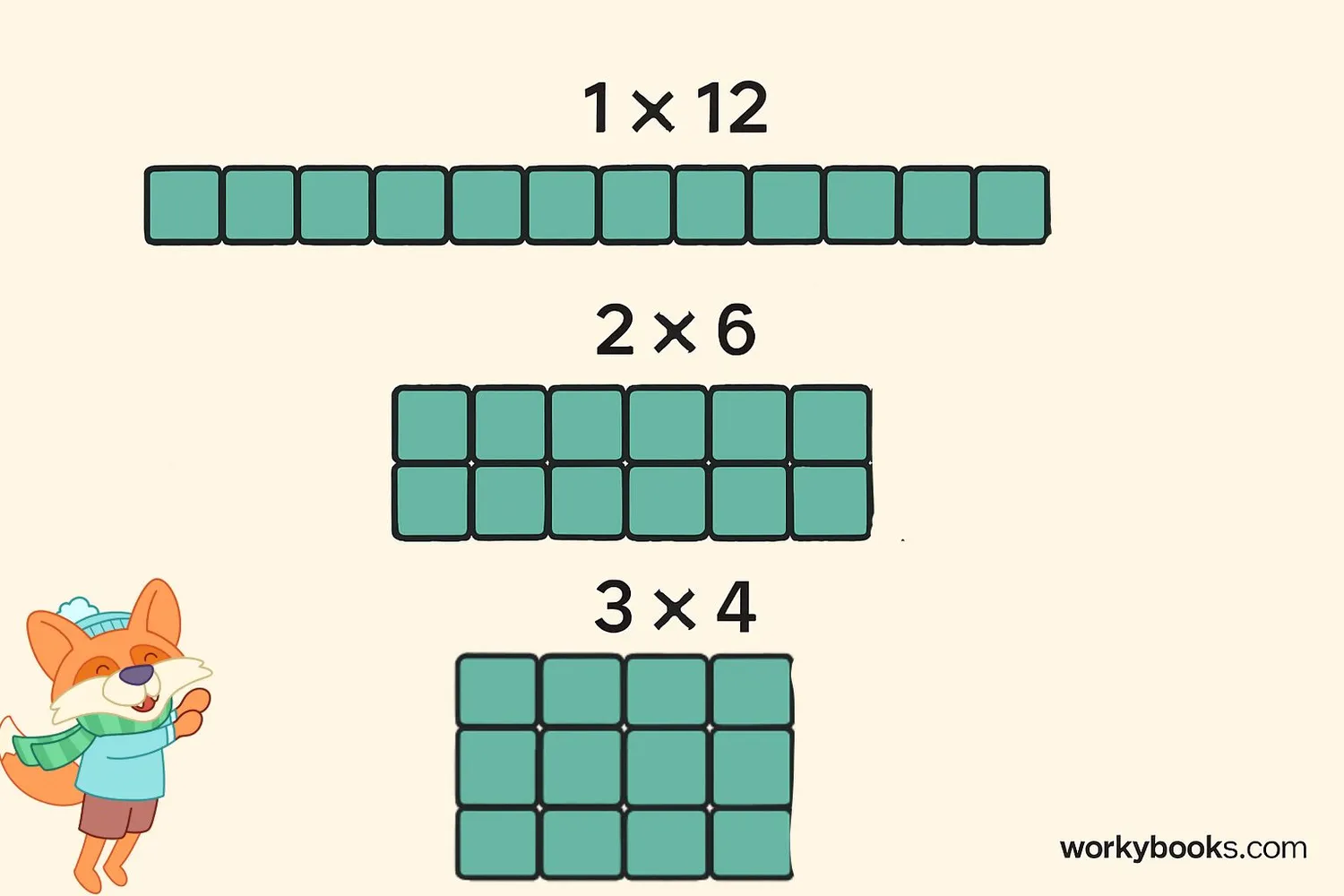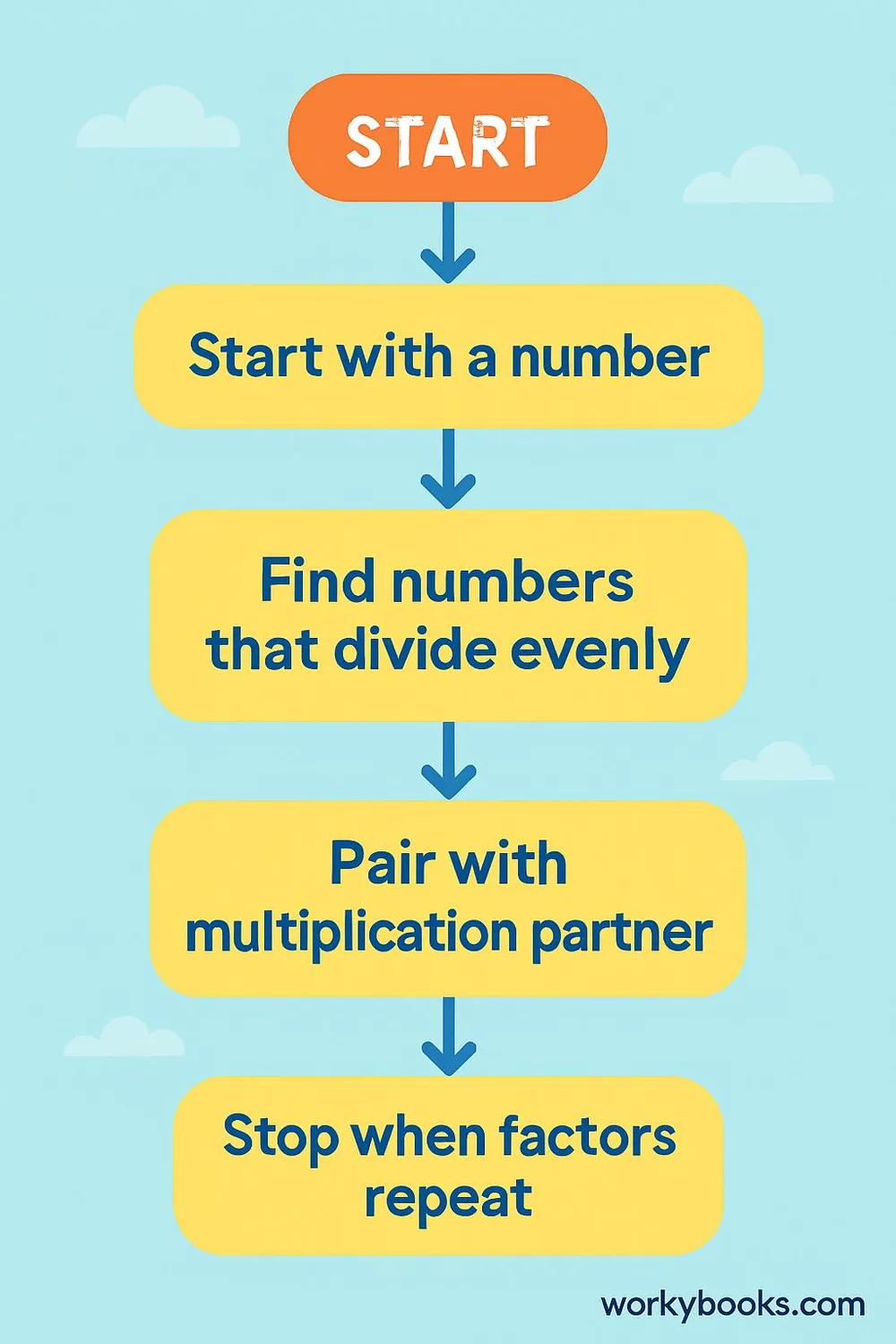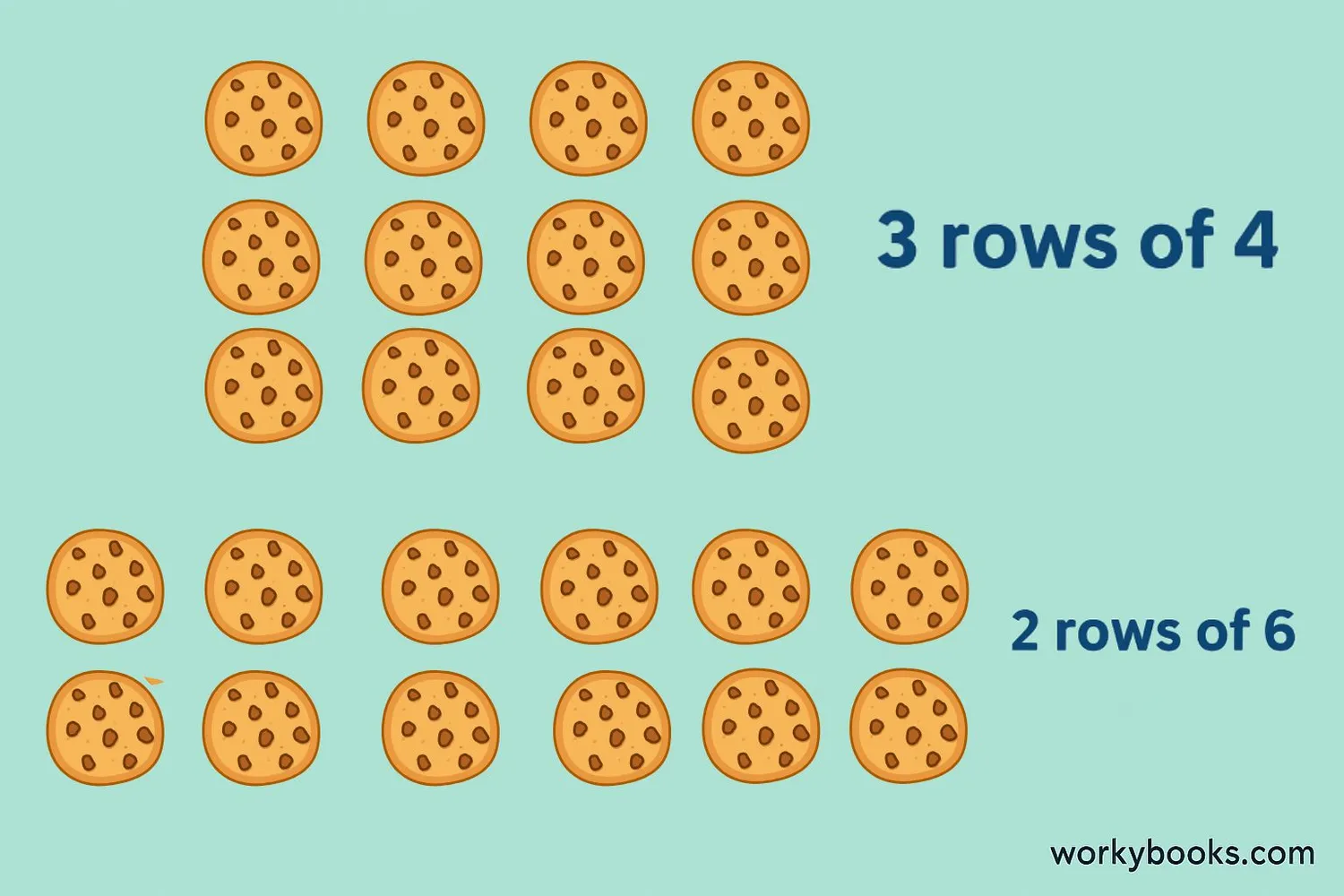Factor Pairs Explained - Definition, Examples, Quiz, FAQ, Trivia
Learn how numbers work together with factors and factor pairs
What Are Factor Pairs?

Factor pairs are two numbers that we multiply together to get another number. For example, the factor pairs of 12 are:
1 × 12 = 12
2 × 6 = 12
3 × 4 = 12
So (1,12), (2,6), and (3,4) are all factor pairs of 12. Notice that we don't list (4,3) because it's the same as (3,4)!
Think of factor pairs like best friends for numbers - they work together to make a bigger number. Every whole number has at least one factor pair: 1 and itself.
Key Concept
A factor pair is two numbers that multiply together to make a specific product. The first factor is usually the smaller number.
How to Find Factor Pairs

Finding factor pairs is like being a number detective! Follow these steps:
Step 1: Start with 1 and the number itself (1 × number)
Step 2: Check if 2 is a factor (does it divide evenly?)
Step 3: Continue with 3, 4, 5, and so on
Step 4: Stop when you reach a number you've already found
Let's find the factor pairs of 24:
1 × 24 = 24 → (1,24)
2 × 12 = 24 → (2,12)
3 × 8 = 24 → (3,8)
4 × 6 = 24 → (4,6)
When we try 5, it doesn't divide evenly (24 ÷ 5 = 4.8), so we skip it. Next is 6, but we already have (4,6) which is the same as (6,4), so we stop!
Factor Pair Rule
Both a and b are factors of the product
Remember
You can stop checking for factors when you reach a number that's already in your list of factors.
Factor Pair Examples

Let's look at factor pairs for different numbers:
Example 1: Factor pairs of 18
Example 2: Factor pairs of 30
Example 3: Factor pairs of 7 (a prime number)
Notice that prime numbers only have one factor pair: 1 and themselves. Numbers with more than one factor pair are called composite numbers.
Visualizing Factor Pairs with Arrays
We can show factor pairs using rectangular arrays. For the number 12:
1 × 12 array
2 × 6 array
3 × 4 array
Real World Connection
Factor pairs help us arrange objects in rows and columns - like arranging chairs in a classroom or cookies on a baking sheet!
Factor Pair Practice Quiz
Test your understanding with these questions. Choose the correct answer for each.
Frequently Asked Questions
Here are answers to common questions about factor pairs:
Math Trivia
Discover interesting facts about numbers and factors:
Perfect Numbers
A perfect number is one where all its factors (except itself) add up to the number. The smallest perfect number is 6: 1 + 2 + 3 = 6. The next is 28: 1 + 2 + 4 + 7 + 14 = 28.
Highly Composite Numbers
12 is a highly composite number because it has more factors than any smaller number. It has 6 factors: 1, 2, 3, 4, 6, and 12. The next highly composite number is 24 with 8 factors.
Prime Numbers
Prime numbers are like the building blocks of mathematics. They have exactly two factors: 1 and themselves. The largest known prime number has over 24 million digits!
Factor Pairs and Area
When we calculate area, we're using factor pairs! A room that is 8 feet by 10 feet has an area of 80 square feet. The factor pairs (8,10) show the dimensions that multiply to give the area.





